Your humble author ran across the most innnn-teresting Twitter thread other day:
What’s the biggest misconception people have about people who use drugs?
— Drug Policy Alliance (@DrugPolicyOrg) July 26, 2021
See, we here at DabConnection write about marijuana all the time, and all our readers and comments and emails are about marijuana, so we’re in our bubble. We may be tempted to think marijuana is mainstream now. It sure gets support at the polls and voting booth. It’s easy to forget just how backwards marijuana’s reputation is with certain people.
Especially certain office-holding people.
When DrugPolicyOrg asks about the biggest misconception people have about drug users, the replies to that Twitter thread could not paint a clearer picture:
- “That drugs are any more dangerous than alcohol, tobacco and firearms”
- “A misconception is that they’re horrible people or losers.”
- “That people who do drugs are morally deficient.”
- “They define drug users by the worse drug abusers.”
- “That one can responsibility use alcohol & nicotine, but illicit drug remove all impulse control.”
Every bad connotation people make about drug users in general seems to stick to marijuana users the most. Really, the bias about marijuana seems stuck in the stone age. In just examining myths about marijuana alone, we see this impossible set of bizarre ideas which are not only scientifically debunked, but hard to grasp how they came along in the first place. For instance, what exactly is a “gateway drug”? Where else do we have this “gateway”? What about alcohol and cigarettes, how come they never get to be the “gateway”? We don’t say “gateway” about anything else but marijuana.
The knot unties when we look back over history to find that nearly every myth about marijuana strangely came into vogue in the 1930s. But we have to back up just a bit to explain something first, stay tuned.
What is an “Exploitation Movie”?
Briefly, it’s the supermarket tabloid of movies. “Exploitation” is a broad genre of film, but we’ll use a working definition that suits our context. Some exploitation movies attempt to bend filmmaking laws and standards to draw an audience attracted to lurid, decadent content under the subterfuge of providing a public service. Others may not have rules to bend, but they’re still trying to make a fast buck off a current fad, trend, or cultural ripple. Sometimes one film accomplishes both goals.
The Motion Picture Association of America (MPAA) cooperated with censorship boards and grassroots organizations (i.e. churches and concerned moral watchdogs) to preserve the image of a “clean” Hollywood. In the 1930s, the code they built up was the Hayes’ Code.
Parts of the Hayes code gave guidelines like:
- Movie must not “lower the moral standards of those who see it”
- In depicting a vice, “the audience must at least be aware that such behavior is wrong”
Now say you’re a film producer in the 1930s, a time where that job title didn’t carry nearly the weight it does now. You want to make movies that make money, and a fast way to do that is with gratuitous sex ‘n’ violence. But the Hayes Code says you can’t… but it does have a clause advocating “moral standards!”
Why then, you can make a movie with plenty of sex ‘n’ violence – and drugs ‘n’ rock ‘n’ roll for that matter – and as long as you tack on a message at the end “Oh this is wrong! Do not do this!” You are off the hook. TVTropes calls it “do not do this cool thing.”
And there’s one way to explain all the wacky hijinks you want to show: They’re on drugs. Why are they acting so strange? Drugs did it! Everybody knows that people on drugs have no inhibition or impulse control whatsoever, right? Just make an anti-drug movie and you can show anything else you want!
Well, even that may not give you the nerve to launch such an audacious stunt. Luckily, you have those moral guardians to push you into it…
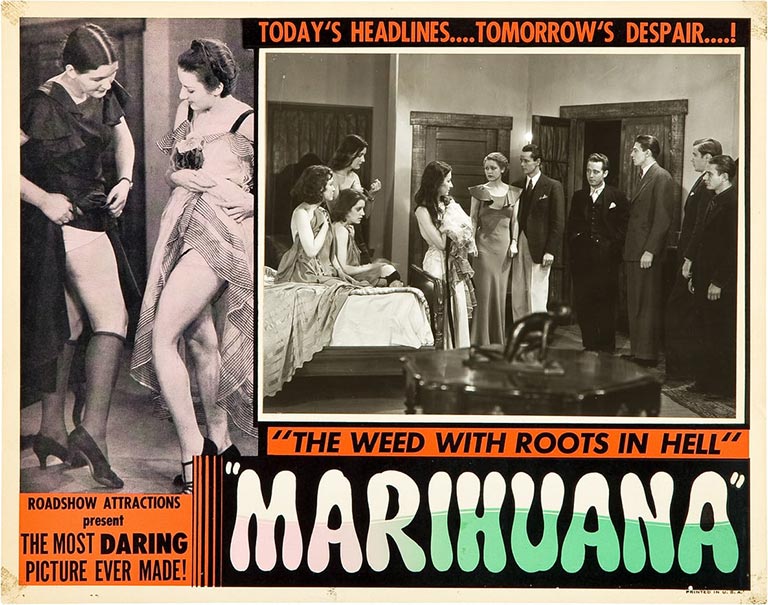
Thus began an age, during the 1930s when a film at the theater once a week was most of the media anybody ever got besides a scratchy radio, of “cautionary tales.” These include too many examples to list here, but it ran the gamut from cautioning against teen pregnancy = excuse to show nudity (Mom and Dad), caution against “hillbilly” lifestyle = excuse to show really young nudity (Child Bride), and “warning: don’t be gay” = excuse to show same-sex nudity. And of course, a slew of anti-marijuana propaganda, producing Marihuana: Weed with Roots in Hell which came out the same year as…
How Reefer Madness Happened
So an independent religious group (which remains anonymous to this day) set up funding to produce this movie, under the working title of Tell Your Children. It got produced in a skeleton version of its present day form by some film-maker who was willing to work for church wages. Then the rights to the film got bought up by a schlock producer Dwain Esper, who also produced the 1932 film Freaks. Verily I survived that one myself.
In fact, you can trace Dwain Esper’s career prior to 1936 and see a clear path to Reefer Madness. Dwain gave us all sorts of lurid “educational” goodies like The Truth About Sex and Man’s Way With Woman. His first drug-themed film had been Sinister Harvest, about the dangers of opiates. It was his second film after “The Truth…” and it must have been a hit because thereafter he stuck to his formula, releasing nothing but sex and drugs as his only two topics.
So Dwain inserted much more material into the film cut. The church had made a pretty tame anti-drug message, but Dwain Esper crammed in all the wackier hijinks. Dwain screened the movie in various parts of the country under different titles to test-market it, and the Reefer Madness version was a hit.
Here’s how good that title worked, Dwain released this 2 years later:

We’re not about to review the whole dang Reefer Madness movie here. It’s public domain, all over Archive.org and YouTube complete and uncut. For a recap, we will elect the Cinema Snob for the honor, since he’s the funniest of the lot:
But beyond Hollywood, you have to ask “Where did the church and Dwain Esper get this corny idea about marijuana, anyway?” Well, meet…
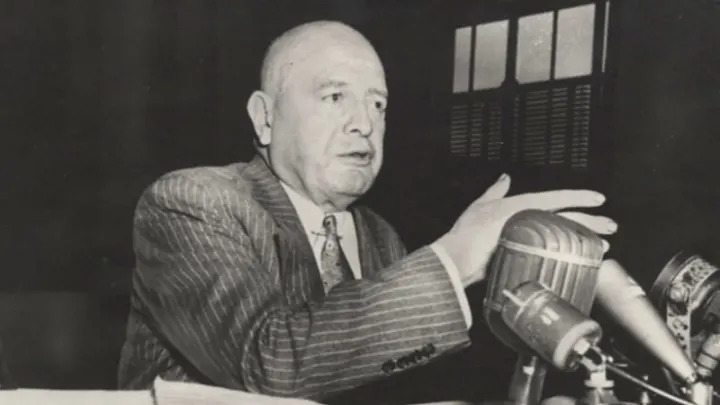
How Harry Anslinger Happened
Harry J. Anslinger doesn’t take as much explaining. He was no different from several modern ultra-staunch conservatives we can name, such as Orrin Hatch, Mitch McConnell, and Jeff Sessions. You know them, you know him. Second verse, same as the first.
Let’s slap a [TRIGGER WARNING] on Harry, because yes, a man serving as Commissioner for the Federal Bureau of Narcotics (the first commissioner, in fact) really did say some outrageous and racist things in an official capacity. Anslinger said things I’m not going to pollute my keyboard retyping here. Trust me, you haven’t seen racism until you’re seen 1930s racism!
Any-who, Anslinger was the one boiling the airwaves with speeches about dark-skinned people and pot, pot and dark-skinned people, blah blah blah. This weird little troll of a fellow also had a passionate hatred of jazz music, in case you thought Footloose (1984) was too off the wall. Then there was alcohol.
Anslinger had previously served as the assistant commissioner in the US Treasury Department’s Bureau of Prohibition, which was in charge of prohibiting, you guessed it, alcohol. So he said all this hate about alcohol too. But then prohibition ended, and Anslinger was out of work until somehow this new “Federal Bureau of Narcotics” was created the same year. So he just slid one desk over to the right and never missed a paycheck. He basically went over his old speeches and crossed out “booze” and substituted “marijuana.”
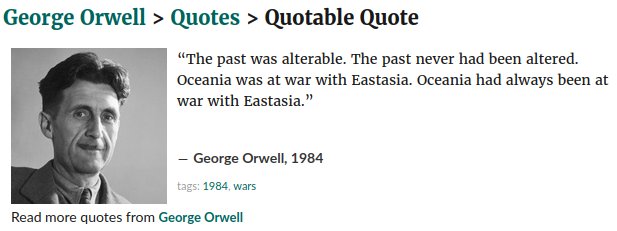
Yeah, we were never at War on Alcohol. We are at War on Drugs. We have always been.
So that was coming out of the radio from 1930 until 1936, and all that official propaganda went right in everyone’s ear, including Dwain Esper, exploitation movie producer.
And if you think the buck stopped with just Dwain Esper, boooooy howdy!
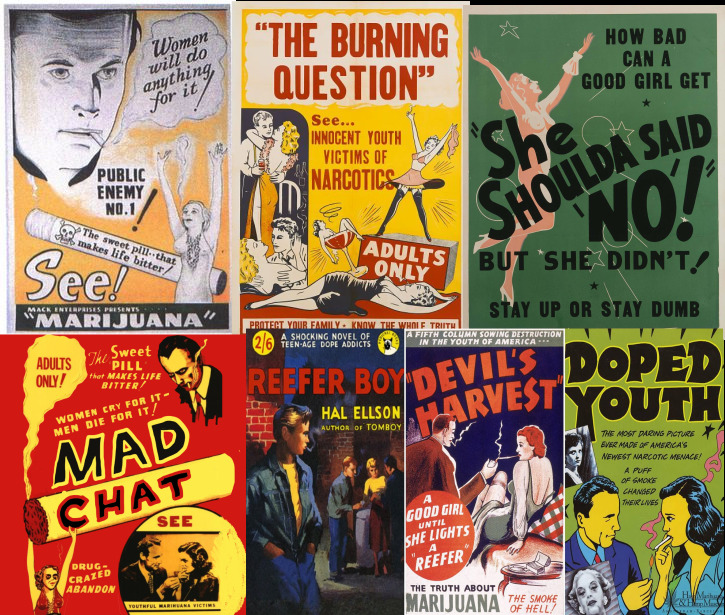
Popular Attitudes Towards Marijuana Haven’t Changed Much!
Especially on certain media channels. Here’s one that just happened yesterday:
TODAY: White House Press Secretary Jen Psaki quickly pivoted away from a Fox News reporter’s question about whether recent shootings in D.C. mean it’s time to "get tougher on marijuana.”
The city’s police chief recently tied cannabis sales to violence.https://t.co/jJ6J9kqyA6 pic.twitter.com/28gnBOBLJe
— Tom Angell 🌳📰ⓥ (@tomangell) July 26, 2021
Or just like that Twitter thread we shared way back at the top. All of the craziness of the many movies like Reefer Madness (1963) stems from the same time and attitude.
This attitude is so prominent that modern politicians name-check the title all the time, such as with Senator Wyden, CAOA co-sponsor, in a recent interview:
UPDATE: January 2022.
In case you were thinking, “Oh but the federal government has to eventually get its act together and wise up”? No. Here is the Drug Enforcement Agency (DEA) list of “new marijuana slang terms,” which is making its rounds on Twitter. Hilarity ensues!
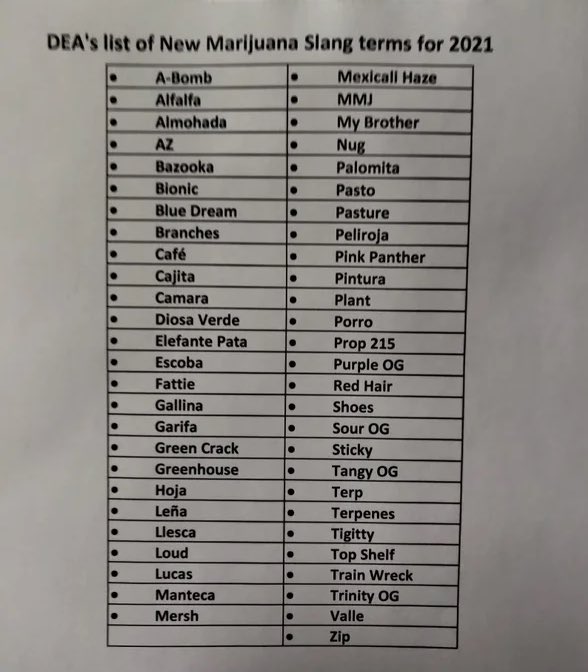
I have neither the time nor the crayons to dissect why every individual word on this list is wrong, but I can group these into handy categories:
- popular cannabis strain names
- generic terms vaguely associated with cannabis
- many generic Spanish / Hispanic words which likewise are only vaguely associated with cannabis
- words I’ve never heard applied anywhere near cannabis culture, and I work in this industry on a daily basis
What Have We Learned Since Reefer Madness?
For one thing, we’re a lot more aware of modern manipulative media tactics. We call out modern day attempts at propaganda all the time. Horay for small victories, at least we have a healthier conversation about the conversation now.
Just remember, the next time you’re watching some conspiracy theory unfold across Facebook, the next time media talking heads get into a shouting match, the next time you get really worried at how effectively the Internet spreads stupidity… Think back to a time in the 1930s when you could just produce one movie and do all that damage at once, make it stick for 85 years and counting, and make a profit while you were doing it!
Readers, the playpen is that way. Have fun!


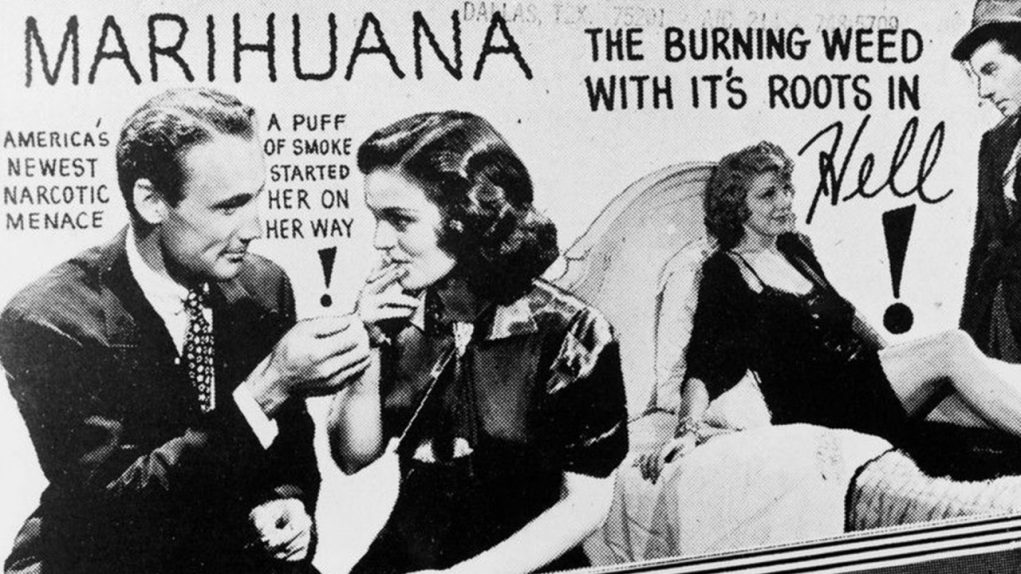
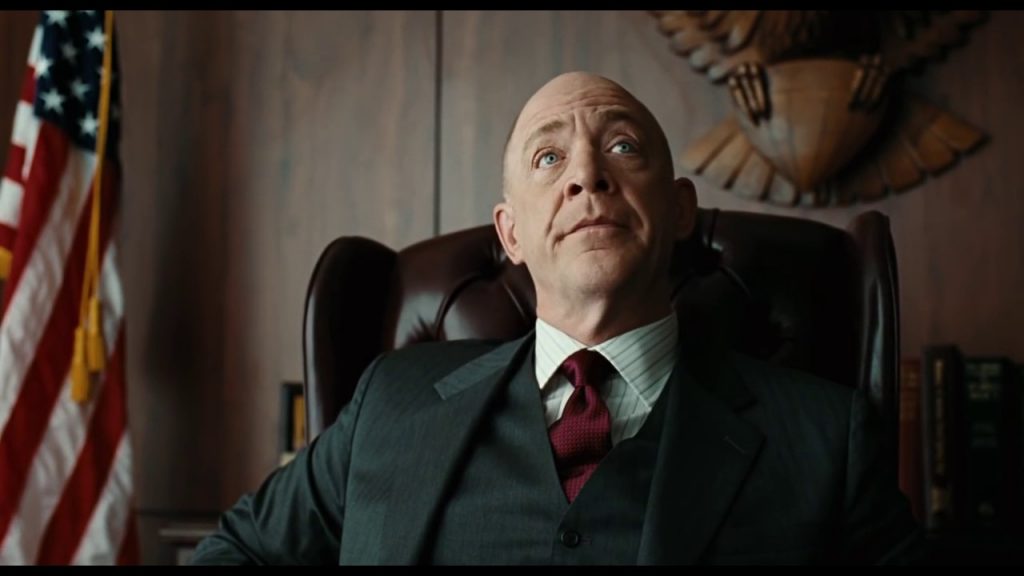






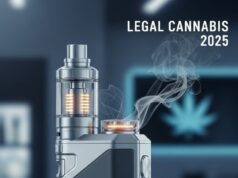
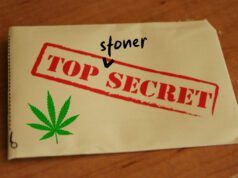
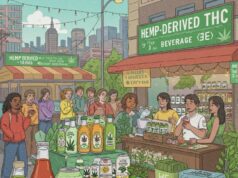


[url=https://joyorganics.com/products/organic-cbg-cbd-tincture ]cbd cbg tincture[/url] purvey a tactful and enjoyable method in search experiencing the intricate’s effects. Within reach in a broad series of flavors, strengths, and blends, they make allowance for accurate dosing and deliver effects that tend to matrix longer. Uncountable users addle to these gummies for their calming and stress-reducing benefits. That said, it’s basic to use them responsibly, as the initiation of effects is typically slower than with methods like smoking or vaping. Always augment dosage recommendations and affirm that their avail is sound in your area prior to consuming or purchasing.